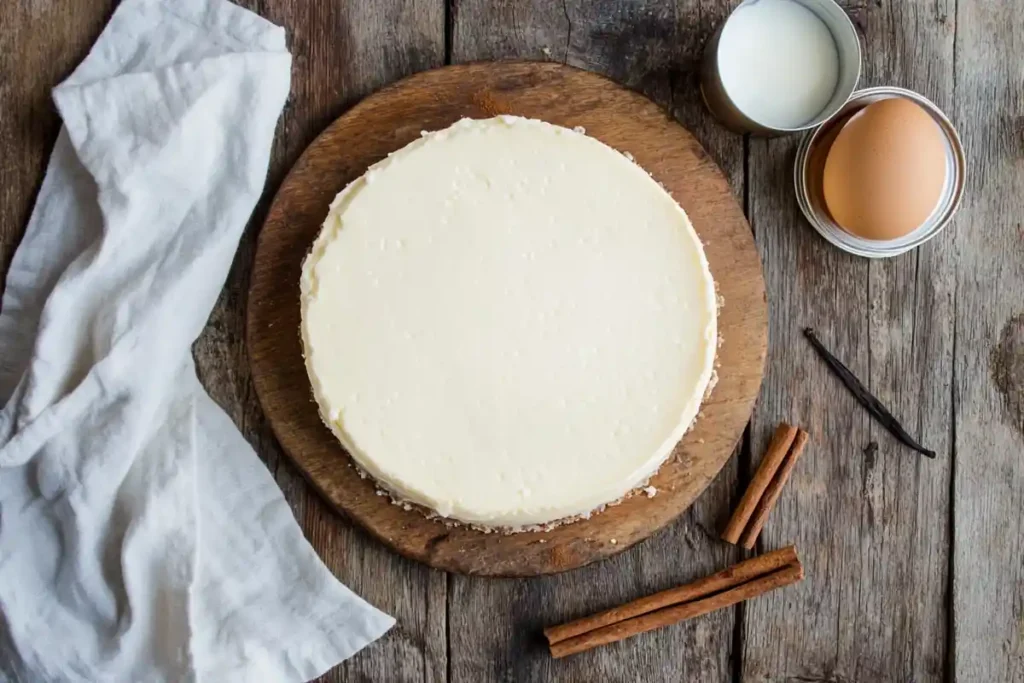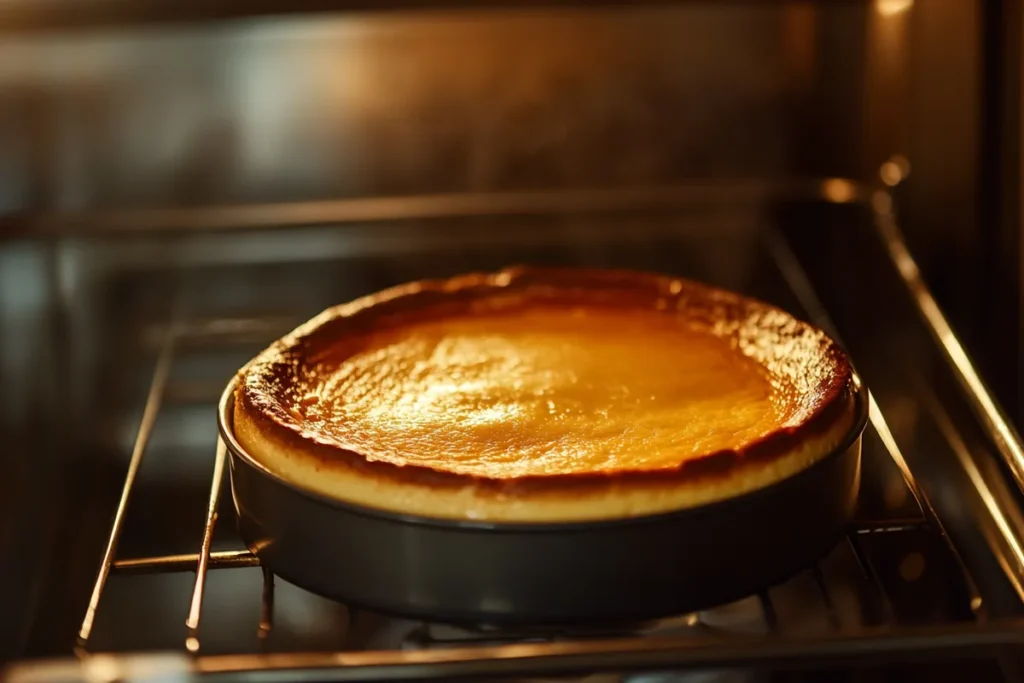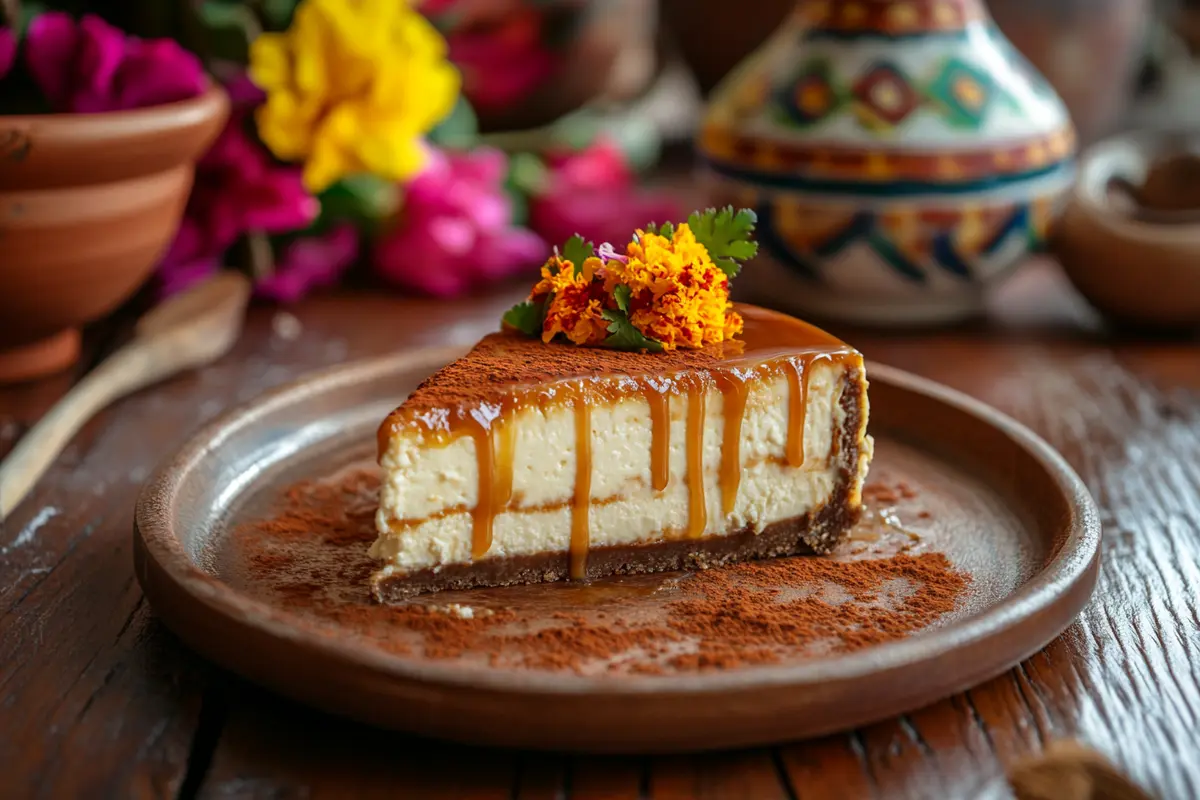Mexican cheesecake blends rich creaminess with unique cultural flavors, making it a one-of-a-kind dessert. To begin with, this article delves into its origins, uncovers its essential ingredients, and highlights its numerous variations. Furthermore, by the end of this exploration, you will clearly understand what makes Mexican cheesecake truly special. Additionally, you’ll learn how to prepare it step by step and discover creative ways to serve it for any occasion. Without a doubt, this dessert offers a perfect blend of tradition and indulgence, ensuring it stands out among other sweet treats. So, let’s dive into the flavorful world of Mexican cheesecake, one delicious step at a time.
Introduction to Mexican Cheesecake
Overview of Mexican Cheesecake
Mexican cheesecake, or “pastel de queso Mexicano,” is a dessert with roots that combine Latin American and European culinary traditions. It’s a creamy, sweet, and slightly tangy treat made with a blend of familiar ingredients like cream cheese and condensed milk, often enhanced with traditional Mexican flavors such as cinnamon and vanilla.
Unlike its American counterpart, which often focuses on elaborate crusts or extravagant toppings, Mexican cheesecake shines in its simplicity and robust flavor profile. The recipe is versatile, allowing for creative twists with fruits, nuts, or caramel sauces.
How It Differs from Traditional Cheesecake
What sets Mexican cheesecake apart? First off, it typically features sweetened condensed milk as a primary ingredient, lending it a luscious, almost caramel-like sweetness. The crust often strays from the traditional graham cracker base and opts for a buttery pastry or cookie-like crust.
Moreover, Mexican cheesecake incorporates flavors like cinnamon and sometimes even a touch of citrus zest, reflecting the vibrant essence of Mexican cuisine. These subtle enhancements bring depth and warmth to every bite, making it a unique dessert experience.
Stay tuned as we delve deeper into the key ingredients and how they work together to create this irresistible treat.
Core Ingredients of Mexican Cheesecake
Key Ingredients Explained

The heart of any great Mexican cheesecake lies in its unique combination of simple yet flavorful ingredients. Traditional recipes often start with cream cheese, a rich and creamy base that provides the dessert’s iconic texture. Next comes sweetened condensed milk, which not only sweetens the cheesecake but also adds a luxurious, velvety consistency.
To elevate these basic components, most recipes incorporate cinnamon and vanilla extract. These classic Mexican flavors infuse the cheesecake with warmth and depth, turning an ordinary dessert into an extraordinary one. In some variations, a hint of citrus zest or a dash of nutmeg is used to brighten the flavor profile, adding a touch of complexity.
Highlighting the Role of Cream Cheese and Condensed Milk
Cream cheese and condensed milk work in tandem to create the perfect cheesecake. The cream cheese provides a thick, spreadable consistency that holds its shape when baked. On the other hand, the condensed milk offers sweetness without the need for granulated sugar, ensuring a smooth, homogeneous filling. Together, they balance each other, producing a dessert that’s rich but not overwhelming.
The Role of Spices and Flavorings
What makes Mexican cheesecake distinct is its bold use of spices like cinnamon and nutmeg. These ingredients are common in Mexican desserts, often evoking the comforting flavors of churros or horchata. Vanilla extract, another staple, enhances the creaminess and adds a subtle floral note. These spices and flavorings set Mexican cheesecake apart from its more neutral counterparts.
For those interested in exploring similar recipes, you can check out Churro Cheesecake Recipe for another dessert featuring the vibrant flavors of cinnamon and cream cheese.
Common Variations and Regional Twists
Variations in the Base or Crust
Some recipes rely on the classic graham cracker crust, while others add a uniquely Mexican twist by featuring Maria cookies or buttery puff pastry as the base. These crusts deliver a crisp, flaky texture that perfectly complements the smooth, creamy filling. For an indulgent upgrade, bakers often use crushed chocolate cookies or spiced biscotti to add bold flavors.
Adding Fruits, Nuts, or Sauces for Flavor
Bakers frequently elevate Mexican cheesecake by incorporating toppings like dulce de leche, caramel drizzle, or fresh fruit. Strawberries, mangoes, and figs infuse vibrant color and natural sweetness into the dessert. For extra crunch, many sprinkle chopped pecans or candied nuts on top, creating a delightful contrast to the creamy filling.
With endless opportunities for customization, Mexican cheesecake continues to captivate dessert lovers worldwide. Whether you follow a classic recipe or create your own twist, this dessert always leaves a lasting impression.
These sections not only explore “What is Mexican cheesecake made of?” but also showcase how its key ingredients and creative variations make it a versatile, flavorful dessert deeply rooted in Mexican culinary traditions.
Step-by-Step Guide to Making Mexican Cheesecake
Preparation of Ingredients
Before diving into the recipe, it’s essential to gather all your ingredients. For the filling, you’ll need cream cheese, sweetened condensed milk, eggs, vanilla extract, and a touch of cinnamon. If you’re feeling adventurous, add a pinch of nutmeg or citrus zest for a flavor twist. For the crust, you can use traditional graham crackers, Maria cookies, or even puff pastry for a flaky, buttery base.
Make sure your cream cheese is softened to room temperature for smooth blending. Preheat your oven to 325°F (165°C), and prepare your baking pan by greasing it or lining it with parchment paper.
Baking Techniques and Tips for Perfection

To create the perfect filling, beat the cream cheese until smooth, then gradually add the condensed milk and eggs. Incorporate the vanilla extract and spices, ensuring the mixture is creamy and lump-free. Pour the filling onto your prepared crust, spreading it evenly.
Bake the cheesecake in a water bath (a larger pan filled with hot water) to prevent cracks and keep it moist. Bake for about 45-50 minutes or until the center is slightly jiggly but set. Once done, let it cool to room temperature, then refrigerate for at least 4 hours or overnight to achieve that perfect, creamy texture.
Common Mistakes to Avoid
Avoid overmixing the batter, as it can introduce too much air, causing cracks. Also, resist the urge to open the oven door frequently, as sudden temperature changes can ruin the cheesecake’s texture. Finally, be sure not to overbake—it’s better to err on the side of slightly underdone, as the cheesecake will continue to set while cooling.
For more tips on creating flawless desserts, consider exploring Churro Cheesecake Recipe for a similar take on Mexican-inspired flavors.
Nutritional Information and Dietary Considerations
Calories and Nutritional Profile
Mexican cheesecake is undeniably indulgent, with its rich combination of cream cheese and sweetened condensed milk. A standard serving typically contains around 300-400 calories, depending on the crust and toppings used. It’s also a good source of calcium, thanks to the dairy components, but it’s high in sugar and fat.
To make it slightly lighter, you can opt for reduced-fat cream cheese or substitute part of the sweetened condensed milk with Greek yogurt. These swaps maintain the creamy texture while reducing the calorie count.
The step-by-step process ensures anyone can enjoy this delicious treat, regardless of their skill level in the kitchen.
Adapting Recipes for Dietary Restrictions
You can easily adapt this versatile dessert to meet various dietary needs. To make it gluten-free, swap the crust for almond flour or gluten-free crackers. For a vegan version, replace cream cheese with plant-based alternatives and use coconut condensed milk for a creamy texture. While these substitutions slightly change the flavor, they still deliver a delicious dessert.
Explore more dietary-friendly recipes on the website, where you’ll find easy and adaptable options to suit your preferences.
This section not only answers the question “What is Mexican cheesecake made of?” but also offers practical tips for creating a version that works for everyone’s dietary needs.
Pairing and Serving Mexican Cheesecake
Recommended Drinks and Desserts
Mexican cheesecake is undeniably rich, and pairing it with the right drink or dessert can significantly enhance the experience. To begin with, a hot cup of Mexican coffee spiced with cinnamon provides a perfect balance to the cheesecake’s creamy sweetness. Moreover, if you prefer a cooler option, a refreshing glass of horchata or a tangy margarita adds a delightful contrast that complements the dessert’s flavors beautifully.
For those looking to create a more elaborate spread, consider serving the cheesecake alongside vibrant tropical fruits such as mangoes, pineapples, or even papaya. Not only do these fruits add a fresh, zesty element, but they also bring a burst of color to your presentation. Additionally, pairing with lightly sweetened whipped cream or a scoop of vanilla ice cream can create a decadent and well-rounded dessert experience.
Presentation Tips for Special Occasions
When it comes to serving Mexican cheesecake on special occasions, paying attention to presentation is essential. To make the cheesecake visually appealing, drizzle the top with caramel or sprinkle powdered cinnamon for a sophisticated touch. Furthermore, you can elevate the dessert’s elegance by garnishing with fresh berries, edible flowers, or a dollop of freshly whipped cream.
For festive events, consider baking individual servings of cheesecake in ramekins or cupcake liners. Not only does this add a personalized touch, but it also simplifies serving and creates an elegant display. Lastly, using a colorful platter or decorative tableware can highlight the cheesecake’s appeal and make it the centerpiece of your dessert table.
To make individual servings, bake the cheesecake in small ramekins or cupcake liners. These are perfect for parties and ensure everyone gets a beautifully presented dessert.
Cultural Significance of Mexican Cheesecake
The Roots of Mexican Cheesecake in Mexican Cuisine
Mexican cheesecake goes beyond being a dessert; it celebrates Mexico’s rich culinary heritage. The recipe showcases locally sourced flavors by blending cinnamon and vanilla, while sweetened condensed milk brings together traditional and modern influences. This delightful treat connects cultural traditions and often appears at celebrations and family gatherings.
So, what is Mexican cheesecake made of? Beyond the simple ingredients, it represents Mexican culture’s spirit of hospitality and warmth. People enjoy it as a comforting post-dinner treat or as the centerpiece of festive occasions, creating moments of joy and togetherness.
How Mexican Cheesecake Has Evolved Over Time
Over the years, Mexican cheesecake has seen numerous adaptations. Initially, it was a straightforward dessert made with easily accessible ingredients. However, as culinary trends evolved, bakers began experimenting with creative variations, such as adding tropical fruits, caramel drizzles, or even spiced chocolate.
Today, Mexican cheesecake is not just a traditional dessert but a canvas for innovation, combining timeless flavors with contemporary twists. This evolution has helped it gain popularity beyond Mexico, earning a place on menus and tables worldwide.
Why You Should Try Making Mexican Cheesecake
Simplicity Meets Sophistication
One of the best reasons to try making Mexican cheesecake is its balance of simplicity and sophistication. With just a few steps and basic ingredients, you can create a dessert that feels luxurious and indulgent. The rich, creamy texture combined with the warm flavors of cinnamon and vanilla makes it a crowd-pleaser for any occasion.
When someone asks, “What is Mexican cheesecake made of?” you can confidently say it’s a masterpiece of minimal ingredients turned into a memorable dessert. Its versatility allows you to adapt the recipe, making it uniquely yours.
A Dessert That Brings People Together
Mexican cheesecake has a way of bringing people together. Whether you’re sharing it at a family gathering, serving it at a holiday party, or simply enjoying a slice with friends, this dessert creates moments of joy and connection. Plus, it’s an excellent conversation starter for introducing others to the rich flavors of Mexican cuisine.
If you’re feeling inspired, why not give this recipe a try? Start with a classic version, or put your spin on it by experimenting with different toppings and crusts. Either way, you’re sure to create a dessert that delights.
These sections highlight the cultural depth and personal appeal of Mexican cheesecake, tying together its culinary roots with its modern-day versatility. By weaving in the keyword What is Mexican cheesecake made of?, the content stays focused while encouraging readers to explore this beloved dessert.
Frequently Asked Questions
What is sopapilla cheesecake made of?
Sopapilla cheesecake combines the flavors of traditional sopapillas with creamy cheesecake in a delightful fusion dessert. Bakers typically use cream cheese, sugar, vanilla extract, and crescent roll dough to form the crust. They brush the top layer with butter and sprinkle it with cinnamon sugar before baking, creating a golden, crisp topping that mimics the texture of sopapillas.
Does Mexico have cheesecake?
Yes, Mexico offers its own version of cheesecake, commonly called pay de queso. This dessert holds a special place in Mexican cuisine and highlights unique flavors. Bakers often prepare it with cream cheese, sweetened condensed milk, eggs, and a hint of cinnamon or citrus zest for a signature taste. Families and friends frequently serve it at celebrations and gatherings, making it a beloved treat.
What is pay de queso made of?
Pay de queso features a creamy mixture of cream cheese, sweetened condensed milk, eggs, and vanilla extract. Bakers often use Maria cookies or graham crackers to create the crust. To add variety, they might top it with fresh fruit, caramel, or cinnamon sugar, giving this dessert a distinctly Mexican twist.
What is traditional cheesecake made from?
Traditional cheesecake starts with a rich blend of cream cheese, sugar, and eggs for its filling. Bakers use crushed graham crackers mixed with melted butter and sugar to form the crust. They flavor the filling with vanilla extract and bake it to achieve a dense, creamy texture. Some recipes include sour cream or heavy cream to enhance its richness further.

